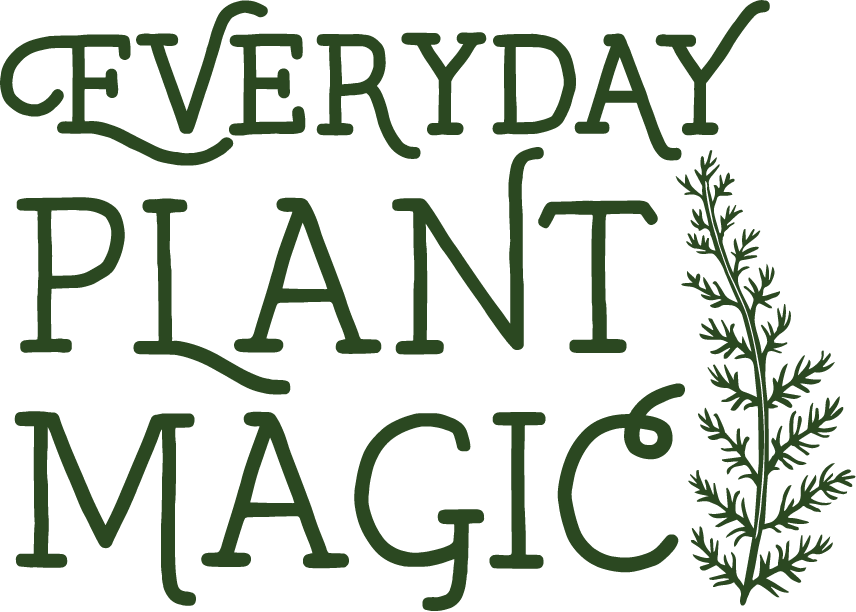Chamomile | Matricaria Recutita
A Timeless Shining Light…
Plant Reflection: One of the first plants of the season in my garden, Chamomile springs to life early and abundantly. Her flowers and bright leaves fill my garden bed. She likes nothing more than to be harvested…often. In the height of summer I head into my garden in the morning to harvest as much as I can and then magically by the next morning the plant would be full of blossoms again. She puts up with my imperfect singing and gently sways as I share my gratitude and love.
Note - all my references are to Matricaria Recutita or German Chamomile. There are other species - most notably Roman Chamomile or Chamaemelium Nobile but I have not personally worked with them.
I am the light that guides you gently on the path to wholeness.
As the season turns to fall I remember the beauty of my Chamomile plant in the spring. Chamomile is the kindest of plant allies. She has been a sacred teacher to me. I’ve learned that behind the sweet, gentle exterior lies powerful healing and deep knowledge. I’ve learned that abundant sharing means more for all. That it is in our gentleness, kindness, and vulnerability where we heal most powerfully and completely.
Historically, Chamomile has been used as a digestive aid, cooler and calmer of all types of stresses and anxieties, pain reliever, and inflammation reducer.
Gentle enough to be used on children at the same time Chamomile can relieve the tensions from the most stressful of days. She has the ability to soothe and calm the grumpy, dissatisfied baby that lies within all of us, Her power as a digestive aid cannot be underestimated. Gentle, kind, beautiful, her powerful spirit and deep healing powers are hidden behind those small bright white and yellow flowers. She reminds us that after the dark and quiet of winter it is time to turn towards the sunlight and rejoice.
I use the tincture after a big meal, tea at night before bed when my restless mind won’t sleep and always when anxiety or nerves are getting the best of me. The flower essence is a gentle soother of spirit and soul. A cup of Chamomile tea before bed or in the late afternoon will soothe your spirit, activate your digestion and support relaxation.
Ways to use Chamomile
As a tea. I believe Chamomile is best taken as a simple single herb. A tablespoon of dried flowers in 8 ounces of hot water steeped for 5 minutes for a sweet, flowery flavor or 15 minutes for a slight bitter taste that will soothe the tummy. Add a bit of honey if you desire.
Chamomile Tincture: A few droppers in water as needed to calm anxiety & tension or relax digestion.
Digestive Support: A cup of tea before or after a big meal or included in a digestive bitter. Try Yum Tum Digestive Bitters.
In the garden - Grow Chamomile! Easy to grow, abundant and beautiful Chamomile will reward you with lots of blossoms to be dried for your own stash and also delight the eye.
Chamomile Flower Essence. Flower essences are vibrational medicine and gently nudge our energetic bodies towards wholeness. Use Chamomile Flower Essence to bring emotions into balance, to release unproductive moodiness and tension and as a reminder that the sun is always shining somewhere.
I am the light that guides you gently on the path to wholeness.
Common Names: German Chamomile-Chamomilla recutita, Earth Apple, Water of Youth, Roman Chamomile-Chamaemelum nobile, Manzanilla
Chamomile Properties & Resources
Botanical Family: Asteraceae/Compositae. An old world plant. A member of the Asteraceae family, these aromatic herbaceous plants have white daisy like flowers and scent reminiscent of apples or pineapple. In fact, the common name "chamomile" is derived from the Greek word kamai which translates to "on the ground" and melon which means apple. Accordingly, the Spanish name Manzanilla, means "little apple."
Energy: Cooling and relaxing Chamomile is ruled by the sun and water.
Taste: Bitter, Sweet, Aromatic
Parts Used: Flowers
When to harvest: Spring & summer, some locations can harvest into the fall.
Western Classification: Antispasmodic, aromatic, carminative, diaphoretic, digestive tonic, nervine, mild sedative, anti-inflammatory (digestive),
Preparations & Dosage:
Tea: 1-2 tsp dried flower in 8oz of water
Tincture: Fresh flowers in alcohol
Poultice: Chamomile tea bags may be placed over the eyes to reduce swelling and refresh tired eyes.
Medicinal Uses: Soothes nerves, calms digestion and releases gas.
Active Constituents: Azulene and other volatile oils, flavonoids, tannins, bitter glycosides, salicylates, coumarins, calcium, magnesium, phosphorus
Precautions: Some people are sensitive to chamomile. If you are sensitive to ragweed and chrysanthemums or other members of the Compositae family and are prone to a reaction, please take care.
Magic & Plant Spirit Medicine:
Habitat & Ecology: Easy to grow Chamomile is cultivated by sowing seeds directly into the ground. It likes dry, light, well drained soil, but isn’t too picky. I live in Southern California and like to plant Chamomile very early in the spring. I’ll often get an April/May harvest and can also receive a second harvest in the early Fall.
May you enjoy the bounty of the plant world each day and remember that beauty and peace lie within and are always within reach.
Blessings, Cindy
Resources
Books:
Gladstar, Rosemary, Medicinal Herbs A Beginner’s Guide, 2012
Greive, M., A Modern Herbal, Dover 1971,
Kloss, Jethro, Back To Eden, 1994
Wood, Matthew, The Book of Herbal Wisdom, 1997
Online Sources:
Plant Profiles
https://www.ncbi.nlm.nih.gov/pmc/articles/PMC2995283/
https://theherbalacademy.com/get-to-know-the-versatile-chamomile-plant/
https://www.encyclopedia.com/plants-and-animals/plants/plants/chamomile
https://www.mountainroseherbs.com/products/chamomile-flowers/profile
https://www.herbalremediesadvice.org/chamomile-benefits.html
Other Online References
https://www.chamomile-benefits.com/chamomile-history/
https://witchipedia.com/book-of-shadows/herblore/chamomile/
https://www.traditionalmedicinals.com/articles/plants/chamomile-101/
https://www.urbanmoonshine.com/blogs/blog/chamomile-a-popular-herb-with-a-strong-record-of-safety






